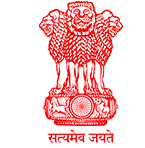Communications
IV. Revised Performance Auditing Guidelines 2014
(Reference No.188/14-PPG/2014 dated 14th October, 2014 )
The Department has adopted revised Performance Auditing Guidelines in July 2014. A copy of the guidelines has been placed on the Department's website and sent to all IA&AS officers via e-mail with a request to bring them to the notice of all the officers performing audit function in IA&AD for their adoption and observance with immediate effect. Some of the important features of the new guidelines are :
- The Audit objectives should be limited in number, ideally about three, to provide appropriate focus to the audit. Defining the audit objectives in a concise manner, developing focused audit questions for each audit objective would ensure that all relevant issues get examined during the audit process. This exercise would ensure that all the deviations and their underlying causes are identified. Through this process, significant deficiencies in implementation of policy and programmes would emerge as audit findings whether those are in nature of doing things inappropriately or not doing the things that are required to be done.
- Depending on the audit objectives, the audit approach should be determined. Typically we have been adopting a system-based approach but we should be looking at using result-oriented and problem-oriented approaches as well. Audits can be pursued from a top-down or bottom-up perspective. Top-down audits concentrate mainly on the requirements, intentions, objectives and expectations of the legislature and central government. A bottom-up perspective focuses on problems of significance to people and the community and with the increasing stress on transparency, citizen-participation for better governance this perspective would add value to our audit.
- Audit teams should prepare the Audit Design Matrix before commencement of the Performance Audit and constantly revisit and update it. Audit Design Matrix is a template that compels the auditors to structure their audit and stay focused on the audit objectives and associated sub-objectives and to develop detailed questions that would provide the framework for fieldwork and further analysis.
- Audit Findings Matrix, as an extension to the Audit Design Study, should be prepared aligning the audit objectives with the audit findings and audit recommendations along with the expected benefits
- All performance audits ought to conclude with well thought-out recommendations, which should transcend inverted versions of audit conclusions or truisms and clearly spell out possible solutions, without taking over management's responsibilities. For developing recommendations, the underlying cause(s) of a finding should be identified, as this forms the basis for the recommendation.
- Interaction with audited entities has to be given due importance throughout the audit process. Proper documentation of such efforts may be kept.
- Draft final report, after the approval of the controlling DAI/ADAI, including the responses of the audited entity/minutes of exit conference should be issued to the head of the audited entity or persons charged with governance as a numbered and confidential copy requesting responses to the audit conclusions and recommendations within a period of two weeks.
- The follow-up audits should not be restricted to merely seeking confirmation of implementation of recommendations but should also focus on whether the implementation undertaken by the audited entity has adequately addressed the problem and remedied the underlying conditions. When conducting a follow-up of audit reports, the auditor should concentrate on findings and recommendations that are still relevant at the time of the follow up and adopt an unbiased and independent approach.
These guidelines have come into force since July 2014 and can be seen by accessing the link provided under Our Processes  Audit Methodology Audit Methodology  Guidelines/Guidance Notes Guidelines/Guidance Notes  Performance Auditing (PA) Guidelines-2014 at our website www.saiindia.gov.in. Performance Auditing (PA) Guidelines-2014 at our website www.saiindia.gov.in.
|







